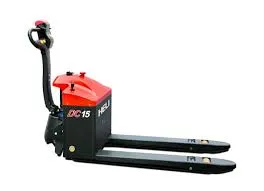


The Lever Block Chain Hoist An Essential Tool for Lifting and Moving Heavy Loads
In industrial settings, construction sites, and warehouses, the need for efficient material handling is paramount. One tool that has stood the test of time is the lever block chain hoist. This mechanical device is designed for lifting and moving heavy loads, making it an essential piece of equipment for various applications.
What is a Lever Block Chain Hoist?
A lever block chain hoist, often referred to simply as a lever hoist, is a manual lifting mechanism that uses a chain to lift heavy objects. It consists of a chain, a lever for operation, and a hook to attach the load. The operation of a lever hoist hinges on the mechanical advantage principle, where a small effort applied to the lever arm translates into a significant force on the load.
Lever hoists are typically made from durable materials such as alloy steel, which provides strength and longevity. They are available in various lifting capacities, from a few hundred kilograms to several tons, making them versatile enough for various tasks.
How Does a Lever Block Chain Hoist Work?
The operation of a lever block chain hoist is straightforward. The user pulls down on the lever, which engages the internal mechanism to pull the chain and lift the connected load. The user can adjust the lifting height by controlling the number of chain links pulled. When not in use, the hoist can be easily disengaged and moved, allowing for portability and convenience on-site.
One of the key benefits of using a lever hoist is that it does not require external power sources, making it suitable for remote locations where electricity may not be available. This feature also makes it an eco-friendly option, as it operates solely through human effort.
Advantages of Lever Block Chain Hoists

1. Versatility Lever block chain hoists can be used for various applications, including lifting construction materials, hoisting machinery, and securing loads. This versatility makes them invaluable in multiple industries, from construction to manufacturing.
2. Safety When operated correctly, lever hoists provide a safe method for lifting heavy loads. They are designed with safety features, such as limit stops and overload protection, to prevent accidents and ensure user safety.
3. Cost-Effectiveness Compared to powered lifting solutions, lever hoists are generally more affordable. Their mechanical nature means lower maintenance costs and a longer lifespan, making them a cost-effective investment for businesses.
4. User-Friendly The simplicity of design makes lever hoists easy to operate, even for individuals without extensive training. This accessibility helps improve productivity in environments where time and efficiency are critical.
Practical Applications
Lever block chain hoists find use in various industries. In construction, they are commonly employed to lift beams and materials to higher elevations. In shipping and logistics, lever hoists are utilized for loading and unloading containers. Additionally, in maintenance and repair industries, they aid in lifting machinery for inspection and servicing.
Conclusion
The lever block chain hoist remains a fundamental tool in material handling and logistics. Its combination of durability, versatility, and efficiency makes it a preferred choice for many professionals across various sectors. As industries continue to evolve, the lever hoist remains relevant, proving that sometimes the simplest solutions are the most effective for managing heavy loads effectively and safely. Whether in a bustling warehouse or on a remote construction site, the lever block chain hoist remains steadfast in its role as an essential lifting device.



